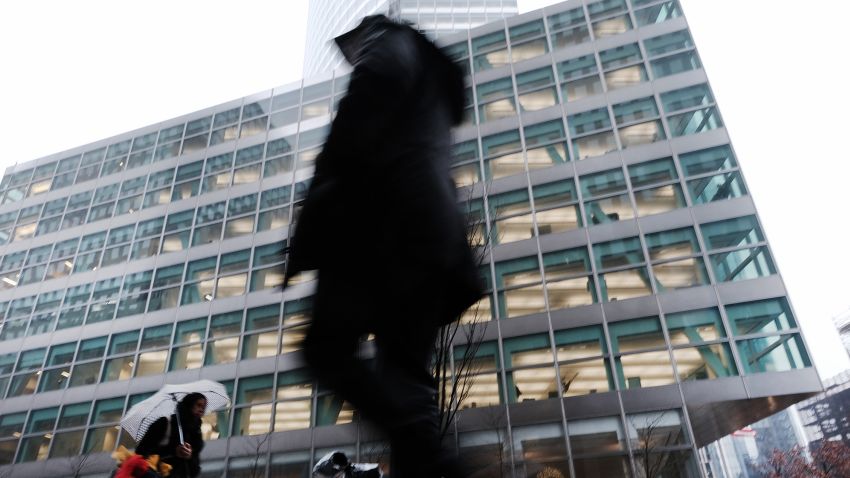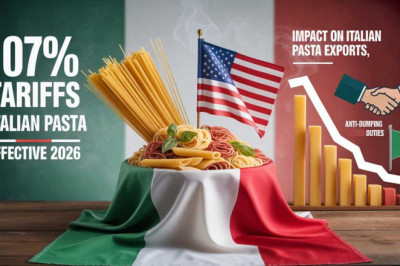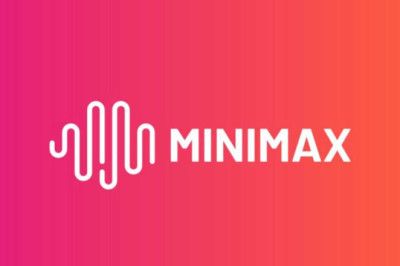
views
The US economy grew by 2.9% in the fourth quarter, more than expected | CNN Business

The US economy expanded again during the fourth quarter, registering solid growth to end 2022 even as consumers and businesses battled historically high inflation and rising interest rates.
Gross domestic product — the broadest measure of economic activity — increased at an annualized rate of 2.9% from October to December last year, according to Commerce Departmentdata released Thursday. For 2022, GDP expanded 2.1%, the report showed.
“It seems that the zeitgeist is very negative these days on the economy, so I’m seeing people pick apart these numbers, and the numbers are good,” said Robert Frick, chief economist at Navy Federal Credit Union. “We shouldn’t expect them to be fantastic, because the economy is slowing down … but they were still very positive.”
Last quarter’s 2.9% expansion, while a step back from the 3.2% annualized growth seen in the third quarter, represents continued improvement on the first half of the year when GDP shrank.
Following 2021, which saw GDP growth of 5.9% — the highest since 1984 — last year kicked off with two back-to-back quarters of contraction. Those declines set off alarm bells, since two consecutive quarters of negative economic growth mark a rule-of-thumb, but unofficial, definition of a recession.
 People walk by Goldman Sachs headquarters in Manhattan on December 16, 2022 in New York City. Goldman Sachs, the global investment bank, has announced that it plans on cutting up to 8% of its employees early next year as world economies and markets continue to struggle with inflation, the war in Ukraine and China's Covid policies among other issues.
People walk by Goldman Sachs headquarters in Manhattan on December 16, 2022 in New York City. Goldman Sachs, the global investment bank, has announced that it plans on cutting up to 8% of its employees early next year as world economies and markets continue to struggle with inflation, the war in Ukraine and China's Covid policies among other issues.
Why Goldman Sachs says a recession isn't coming
However, 2022 was a year of transition as the economy continued to recover from the pandemic. Imbalances in trade and inventories had an outsized effect on the GDP data in the earlier parts of the year.
But businesses have since readjusted to snarls in the supply chain, and consumers have shifted their spending away from furniture, bikes and other goods and toward services like travel and dining out.
The robust economic growth registered during the fourth quarter was mostly fueled by a “shockingly resilient consumer,” said John Leer, chief economist at Morning Consult.
However, there are signs that’s starting to wane, he said.
Fourth-quarter consumer spending, which was primarily focused in services sectors, increased 2.1%, a tick down from the 2.3% gain in the third quarter, according to Thursday’s report.
“Consumers are increasingly struggling to navigate the ongoing effects from the spike in prices last year by drawing on credit and savings,” Leer said. “With consumer demand likely to continue its downward trajectory, business investment is also likely to slow in the coming quarters, increasing the probability of a recession this year.”
Last year, inflation ballooned to a 40-year high and remained stubbornly elevated, chipping away at consumers’ finances and their confidence. The Federal Reserve embarked on a heavy-handed effort to quickly ramp up interest rates to help tamp down demand and lower inflation. While monetary policy changes require some time to take effect, certain areas of the economy (notably housing) have already grown considerably weaker.
Thursday’s report showed residential fixed investment slumped 26.7% during the final three months of the year, slightly narrower than the third-quarter plunge of 27.1%. Business investment in equipment fell 3.7% during the final quarter of the year.
Inflation, which is slowing, remains the wild card for 2023, Frick said.
“Inflation is the bogeyman here, and the smaller the bogeyman we have, the less pressure there is on all of the other things that are holding up the economy — consumer spending, business spending, government spending,” he told CNN.
Expect the first six months of the year to be very dynamic, he said.
“A lot of it is going to depend on which of these things fades the fastest: If it’s inflation, we’re in great shape; and if it’s consumer spending, we’re in not-so great shape,” he said. “But I think there are a lot more positives that we’re looking at now than we were in November.”
Economists were expecting fourth-quarter GDP to grow at an annualized adjusted rate of 2.6%, according to Refinitiv.
Thursday’s GDP figures are the first of three official estimates to be released by the Commerce Department for the fourth quarter. GDP data is often revised, sometimes years later.





















Comments
0 comment